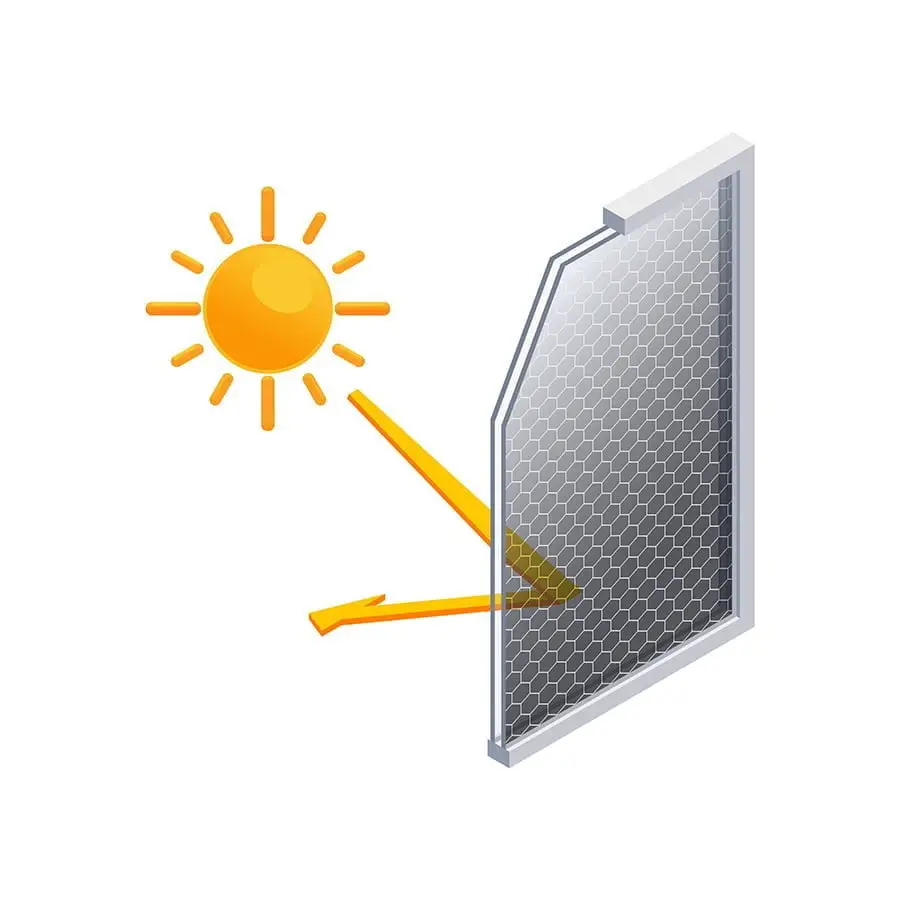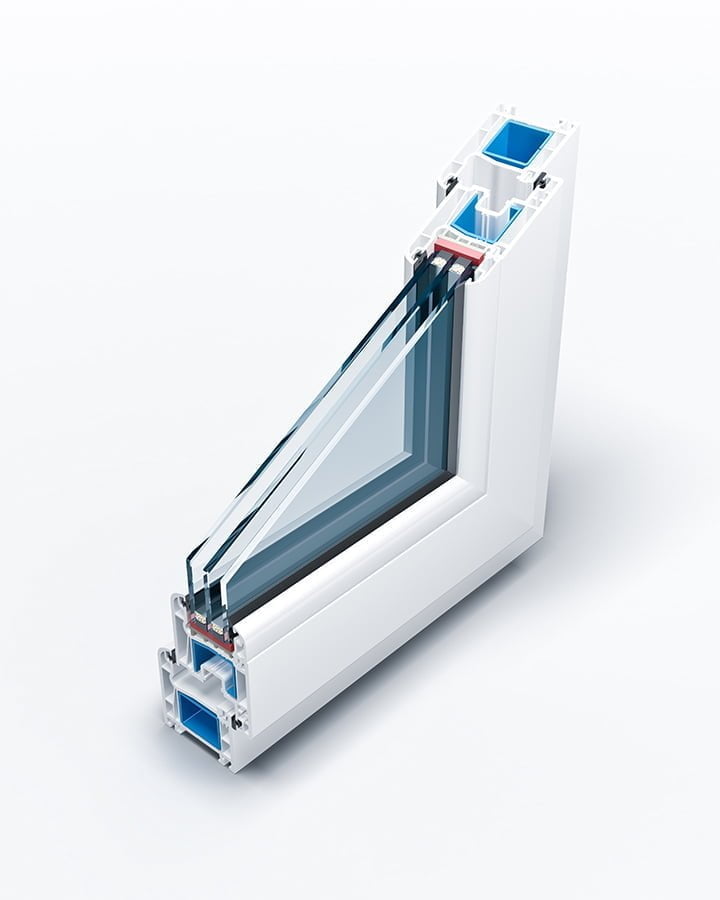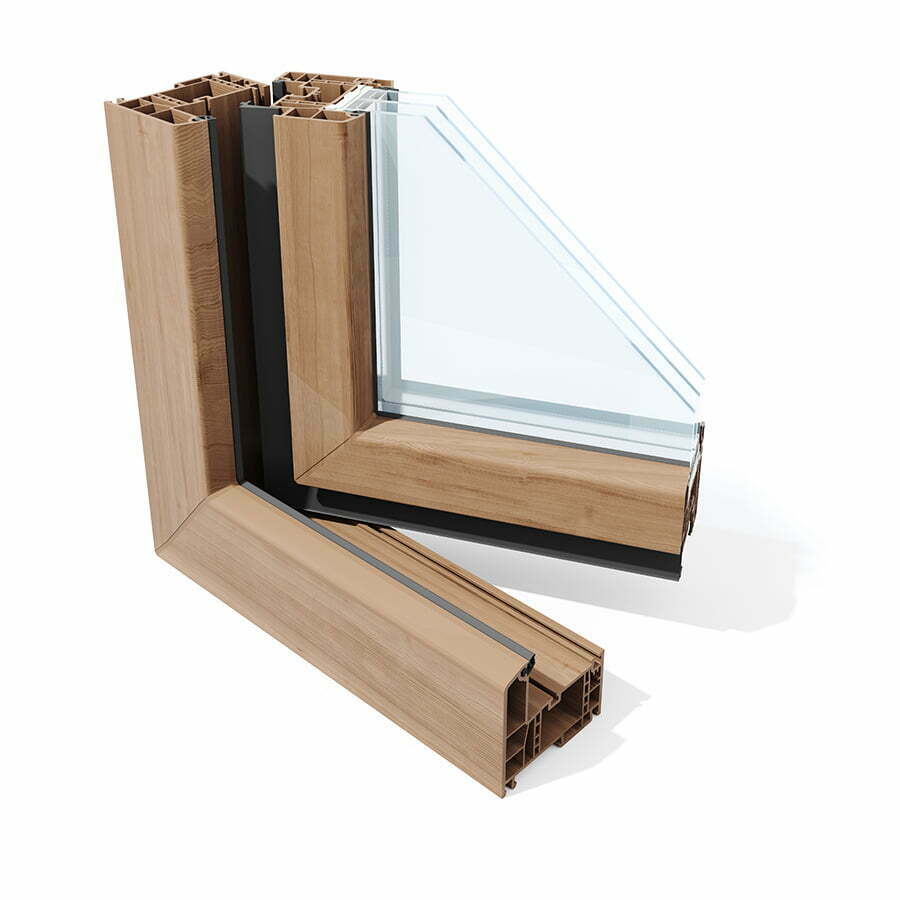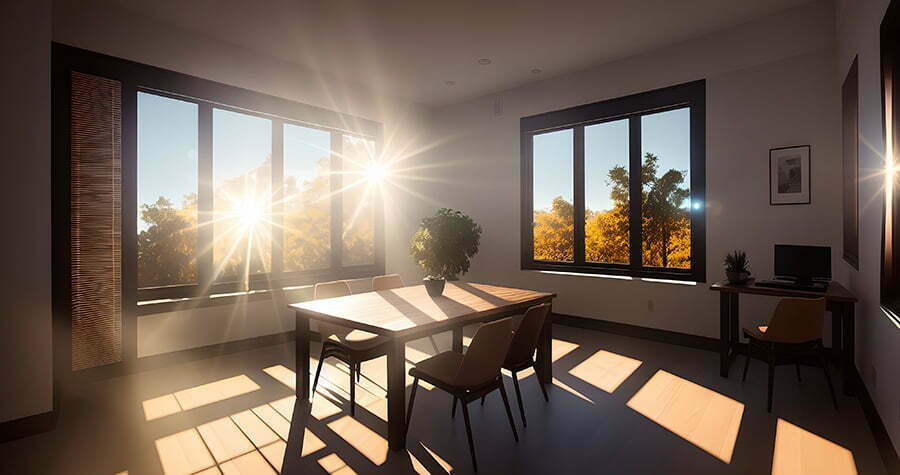Discover how to master the balance between solar heat gain coefficient and energy efficiency when choosing windows for your home.
As a homeowner, I have always been fascinated by the power of natural light and how it can transform a living space. But as much as I love the sun’s warm rays streaming through my windows, I also know that too much of a good thing can be detrimental to my energy bills.
That’s why when selecting windows for my home, I always look for the perfect balance between beauty and efficiency.
One crucial factor in achieving this balance is understanding your windows’ solar heat gain coefficient (SHGC). It may sound like an intimidating term, but trust me; it’s not rocket science! In simple terms, SHGC measures how well your window blocks heat from entering your home.
This article will dive deep into what SHGC means and how it affects your home’s energy efficiency. We’ll also explore some tips on choosing energy-efficient windows that keep you comfortable all year round while saving you money on utility bills.
So please sit back and relax; we’re about to master the art of balancing natural light with energy efficiency!
Solar Heat Gain Coefficient (SHGC)

The solar heat gain coefficient (SHGC) measures how much solar radiation passes through your window and enters your home as heat.
This measurement is expressed as a number between 0 and 1, with lower numbers indicating less heat entering the house.
When selecting windows for my home, I always consider their SHGC rating to ensure that they provide optimal energy efficiency without sacrificing natural light. After all, who doesn’t love basking in the sunlight on a lazy Sunday afternoon?
But finding the perfect balance between beauty and efficiency can be challenging when choosing windows for your home. That’s why understanding how SHGC works is crucial in deciding which type of window will work best for you.
In our next section, we’ll explore some tips on choosing energy-efficient windows while keeping comfort levels high all year round!
Energy-Efficient Windows

When it comes to energy-efficient windows, there are a few key factors to consider. First and foremost is the window’s U-factor, which measures how well it insulates your home against heat loss.
The lower the U-factor, the better its insulation properties.
But as we mentioned earlier in our story, another critical factor in achieving an energy-efficient home is understanding solar heat gain coefficient (SHGC). This measurement determines how much of the sun’s radiant heat can pass through your window into your living space.
While natural light can be beautiful and uplifting for homeowners like me who love bright spaces, too much direct sunlight can cause unwanted heating during summer months or even fading of furniture over time. That’s why choosing windows with low SHGC values will help reduce cooling costs while still allowing plenty of natural light into your home.
So when selecting new windows for my house or advising others on their choices as a blogger writing about house windows industry trends; I always look at both U-factor and SHGC values together to ensure that I’m getting maximum efficiency without sacrificing beauty or comfort!
Balancing SHGC and Insulation

As I mentioned earlier, achieving the perfect balance between natural light and energy efficiency is crucial when selecting windows for your home. One way to achieve this balance is by considering both the solar heat gain coefficient (SHGC) and the insulation of your windows.
Insulation plays a vital role in keeping your home comfortable throughout the year. It helps prevent heat loss during winter months while keeping cool air inside during summer months.
When choosing energy-efficient windows, it’s essential to consider their insulating properties as well as their SHGC rating.
Windows with low SHGC ratings are ideal for hot climates where you want to block out excess sunlight and reduce cooling costs. However, if you live in colder regions or areas with harsh winters, high SHGC ratings may be more suitable since they allow more sunlight into your home to help warm it up naturally.
When shopping for new windows, look for those with a good balance of insulation and SHGC rating based on your climate needs. Doing so lets you enjoy plenty of natural light without sacrificing comfort or paying exorbitant utility bills!
Glazing Technologies

When it comes to energy-efficient windows, glazing technologies play a significant role in determining the solar heat gain coefficient. Glazing refers to the glass used in your window, and several types of glazing technologies are available today.
For instance, low-emissivity (low-e) coatings can help reduce solar heat gain by reflecting infrared radiation while allowing visible light to pass through. Another option is double or triple-pane windows that have insulating gas between the panes for better thermal performance.
As a homeowner who loves natural light but also wants an energy-efficient home, I found myself overwhelmed with all these options when shopping for new windows. However, understanding how each technology affects my home’s SHGC helped me make an informed decision.
After researching and consulting with experts in the industry, I opted for double-pane windows with low-e coatings on one side of each pane. This combination allowed me to enjoy plenty of natural light while keeping my home cool during hot summer months without breaking the bank on air conditioning bills.
When choosing energy-efficient windows that balance beauty and efficiency perfectly well; consider different glazing technologies available today as they play a crucial role in determining your window’s SHGC value – which ultimately impacts your utility bills!
Window Frames and Materials

The frame material you choose can significantly impact your home’s energy efficiency.
For example, aluminum frames are durable and low-maintenance but conduct heat quickly, making them less efficient than other materials. On the other hand, vinyl or fiberglass frames offer better insulation properties and can help reduce your heating and cooling costs.
But it’s not just about the frame material; you also need to consider factors like air leakage rates and U-factor when choosing a window for maximum efficiency. A high-quality window with an airtight seal will prevent drafts from entering your home while keeping conditioned air inside where it belongs.
When shopping for new windows, don’t forget to ask questions about different frame options’ pros and cons so that you can make an informed decision based on what works best for your budget as well as comfort needs. Remember: mastering the balance between natural light exposure through SHGC ratings while ensuring optimal insulation through proper framing is key to achieving both beauty & efficiency in any living space!
Orientation and Shading Strategies

The direction your windows face can significantly impact how much sunlight enters your home, affecting both natural light and energy efficiency.
For example, south-facing windows receive the most direct sunlight throughout the day. While this may be ideal for those in colder climates looking to maximize passive solar heating during winter, it can lead to overheating during summer months if not properly shaded or insulated.
On the other hand, east- and west-facing windows receive more direct sunlight during specific times of day but are generally less intense than south-facing ones. Proper shading strategies such as exterior shades or overhangs can help reduce unwanted heat gain while still allowing natural light into your home.
North-facing windows typically receive little direct sunlight but provide consistent ambient lighting throughout the day without adding excessive heat to a room.
By considering window orientation when designing or renovating a home and implementing proper shading strategies like awnings or trees outside of sun-exposed areas you’ll be able to balance natural light with energy efficiency all year round masterfully!
Related Stories
- Understanding Window Energy Ratings: Making Sense of the Numbers
- Energy-efficient Window Certifications and Standards: Demystifying the Labels
- Impact of Window Size On Energy Efficiency: Bigger Isn’t Always Better
- Energy-efficient Windows for Different Climates: Tailoring Your Home’s Needs
- Energy Star-rated Windows: A Shining Example of Efficiency
Recap
